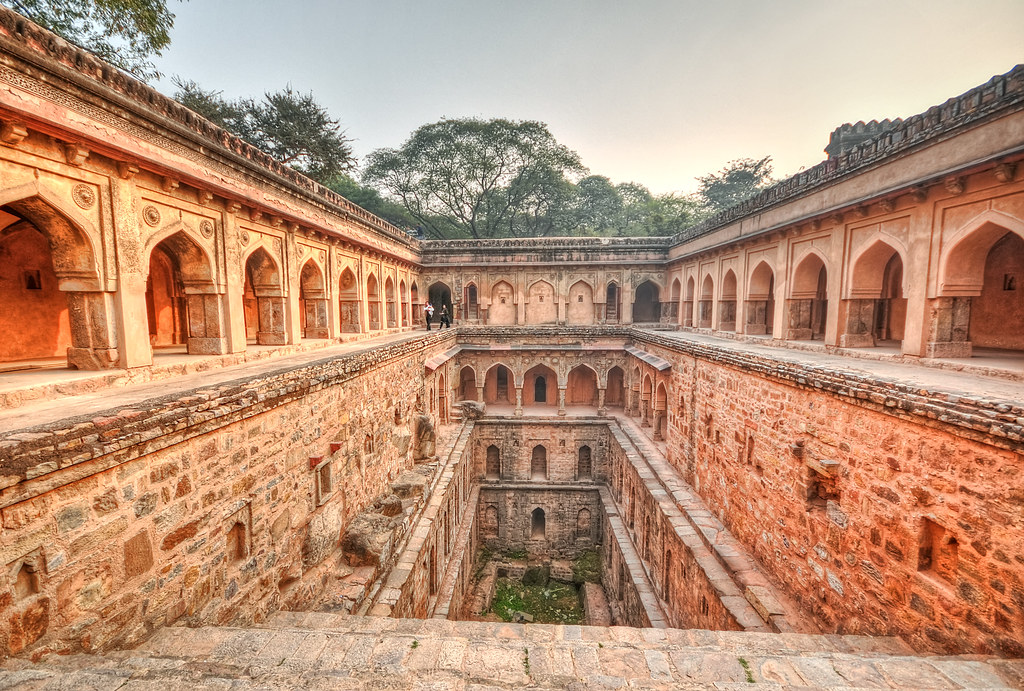Rajon ki Baoli also referred as Rajon ki Bain is a famous stepwell in Mehrauli Archaeological Park of Delhi, India. It was commissioned by Daulat Khan in 1506 CE, an administrator of the Lodi dynasty of the Delhi Sultanate.
Located in Mehrauli Archaeological Park in the capital city, is the Rajon Ki Baoli which is famous for its architecture that can be dated back to Lodhi sultanate. Built by Daulat Khan, it is dedicated to the Rajons, which means masons and not kings. Another historic wonder that lies close in the proximity of this step-well is Dargah of Qutb-ud-Din Bakhtiyar Kaki, the man who brought Delhi the legacy of Sufism adding another reason to the beauty of this Baoli.
The Rajon ki Baol, rectangular in plan, is the largest and most ornamented of all the three baolis in Mehrauli. It has a series of steps forming four stages, each in descending size, with floors at each stage, leading to the water level from the surrounding ground level. Its appearance is like a courtyard of the medieval period with passages marked by stylized carved symmetrical arches spanning the columns in North Indian architectural style, which form the three sides of the baoli. There are rooms on each floor that once provided an excellent resting place for people. With its incised plasterwork, the baoli is an elegant architectural edifice.
